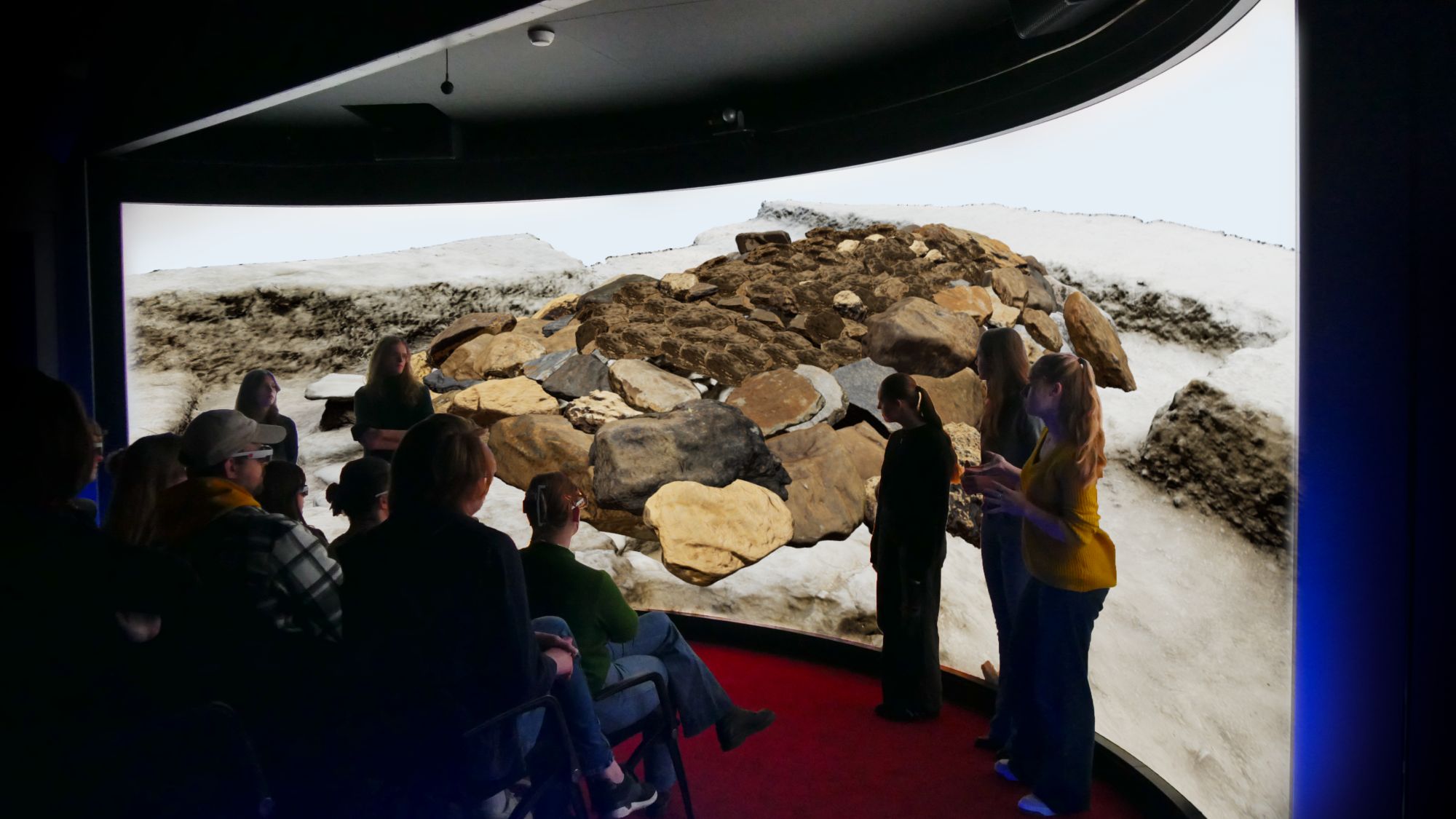XR Hub 5 december: Virtuele reconstructie van een prehistorische tombe en onderzoek naar collegeaandacht via VR
Tijdens deze editie van de XR hub vertellen RUG-onderzoekers over de toepassing van XR in archeologie en de inzet van VR bij onderzoek naar de aandacht van studenten tijdens colleges.
Na de plenaire sessie volgen er demo's van de besproken projecten in het XR-lab.
Aanmelden
Aanmelden kan via een mail naar realitycenter rug.nl.
De voertaal is Engels
Programma
> Welkom en introductie
> Virtuele reconstructie van een prehistorisch graf en presentatie aan medestudenten
Hoogleraar Griekse Archeologie prof.dr. Sofia Voutsaki vertelt over een nieuw didactisch model met XR- en 3D-technologie dat sinds kort beschikbaar is in het reality centrum van de RUG. Het doel van dit nieuwe lesmodel is om archeologiestudenten beter voor te bereiden op wat ze in het veld zullen tegenkomen. De virtuele omgeving van een prehistorische tombe geeft een zintuiglijke ervaring waarin ze kunnen experimenteren met de constructie van het ontbrekende dak van de tombe.

De eerste stap van het didactische model bestaat uit het maken van een reconstructie van de tombe (waarvan het dak ontbreekt) in een kleine groep van 4-5 leerlingen. Hierbij maken ze gebruik van echte delen van de tombe (gevonden stenen) en hypothetische balken die allemaal beschikbaar zijn in 3D. Door de reconstructie in virtual reality uit te proberen, kunnen de studenten nadenken over constructiemethoden zonder de belemmering van de zwaartekracht.
De tweede stap is het presenteren van de groepsoplossing in 3D in het virtual reality theater aan twintig leerlingen om de gekozen oplossingsstrategieën te bespreken. Tijdens de presentatie is het mogelijk om beide stappen te ervaren.
> Inzet van VR bij onderzoek naar aandacht tijdens colleges en perceptuele belasting
RUG-onderzoeker dr. Anja Schüppert van de Letterenfaculteit onderzoekt met behulp van VR hoe studenten onder verschillende omstandigheden universitaire colleges volgen. Om het bijwonen van colleges zo dicht mogelijk op de praktijk aan te laten sluiten en tegelijkertijd het verzamelen van gegevens onder laboratoriumcondities te behouden, zijn de colleges opgenomen met een 360°-camera.

De deelnemers woonden de colleges bij met behulp van een VR-headset met ingebouwde eye-tracking. De instructietaal (Nederlands/Engels) en de zitplaats van de deelnemers in de collegezaal (achter/voor) werden gemanipuleerd en de tentamenresultaten en oogbewegingen tijdens de colleges geanalyseerd. Tot slot gaf de aan- of afwezigheid van verstoringen tijdens het college en de reactie van de deelnemers op deze verstoringen een indruk van de perceptuele belasting van studenten in de verschillende omstandigheden.
